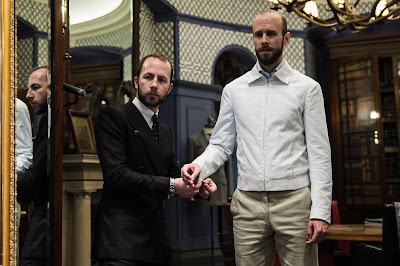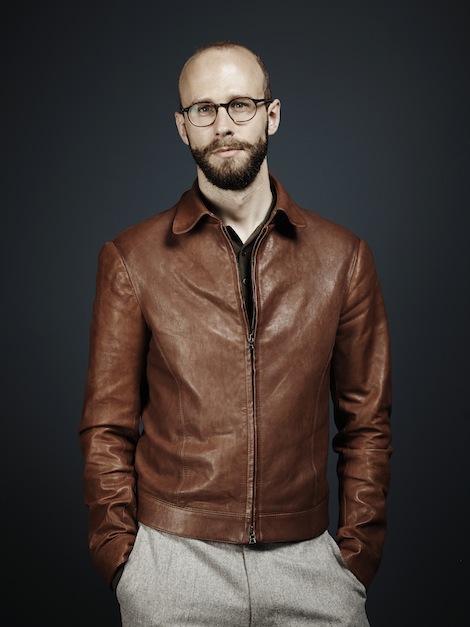Last week I was in Northampton visiting a few of the shoemakers, particularly Crockett & Jones and the new Gaziano & Girling factory.
I have never owned any Crockett & Jones shoes. But I have heard so many great things from friends and colleagues that I have never had any hesitation in recommending them, unlike any other brand I haven’t tried myself. Seeing them being made added greater confidence to that recommendation.
Crockett & Jones is a big factory. It is the second biggest in Northampton, after Church’s, and dwarfs the likes of Edward Green or John Lobb. There are seven big rooms across several floors of the building, which takes up half a city block. C&J moved here in 1890, and the factory still has lovely wood floors, frosted glass and well-worn handles. Like the lovely John Smedley factory in Matlock, it will remind American readers most of an old British school in a black-and-white movie.
The biggest thing that sets Crockett & Jones apart from its competition – for a shoemaker of this size, and this quality – is its range. Any other producer making up to 3000 shoes a week would have a much smaller product line. At one point James Fox and I (head of online and wife of Philippa Jones, daughter of owner Jonathan Jones) looked around the carts of shoes in the finishing area. There were 40 different styles of shoes, from brown brogues to burgundy boots.
One reason C&J has such a range of lasts, colours and styles is that it works with dozens of retailers around the world, all of whom order their own, specific designs. There is still a lot of product development in house: it is the key strength of Jonathan Jones, the owner. But he receives constant feedback from the various retailers, where other brands concentrate more on their own ranges and stores.
It is also unusual for a factory of this size to have so many individual, specialist operations. They are more likely to have automated processes and track systems, where people do one small task and put their product back on a moving track. The processes here are much more similar to Edward Green or Lobb.
Sole finishing is a mucky business
There are differences of course, mostly in the handwork, but the materials tend to be similar – at least with the Handgrade range, which has always been great value for money. Materials tend to account for around 40% of the price of a Crockett & Jones shoe, with labour the extra 60%. As shoes get more expensive, the amount of labour increases but the materials are the same. It’s easy for shoemakers to know this because they all know who buys from which tannery. (Although the price of upper leather in particular is rocketing up, due to luxury brands buying up all the good leather – and tanneries – for handbags. As if there weren’t enough reasons to hate those overpriced fashion accessories.)
One other fact about C&J production: around half of their shoes are hand-clicked, and half use a press knife (clicking room below). There is little difference in quality – the key skill of a clicker is working the leather, not cutting – and it tends to be the core styles that use a press knife, as it is worth investing in all the metal shapes for a new style (7 or 8 per shoe, in every size).
I thoroughly enjoyed my visit to Crocketts, particularly the people. I saw Cliff Roberts again, who works there. It’s easy to be optimistic about the company, with James and Philippa the next generation. And I particularly enjoyed talking to Nick Jones, Jonathan’s brother, who runs the production as well as his own farm. This is the archetypal Englishman for me: not a black-tied poser smoking a cigar in his club, but a man of modesty, enthusiasm and the slightest touch of silliness. Michael Palin; not James Bond.
I thoroughly enjoyed my visit to Crocketts, particularly the people. I saw Cliff Roberts again, who works there. It’s easy to be optimistic about the company, with James and Philippa the next generation. And I particularly enjoyed talking to Nick Jones, Jonathan’s brother, who runs the production as well as his own farm. This is the archetypal Englishman for me: not a black-tied poser smoking a cigar in his club, but a man of modesty, enthusiasm and the slightest touch of silliness. Michael Palin; not James Bond.

































